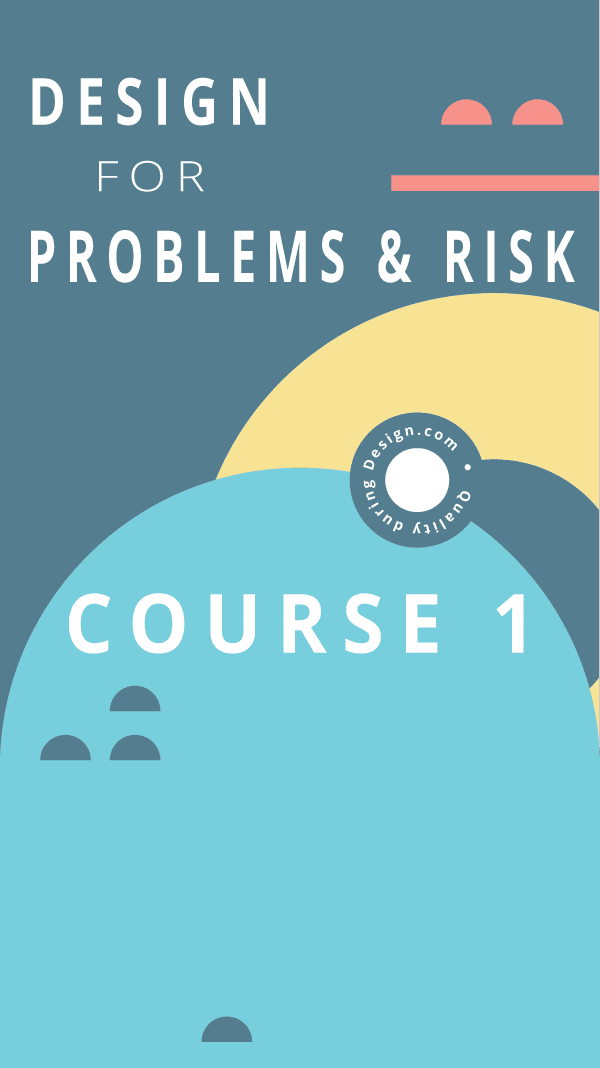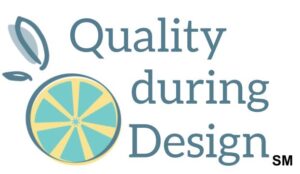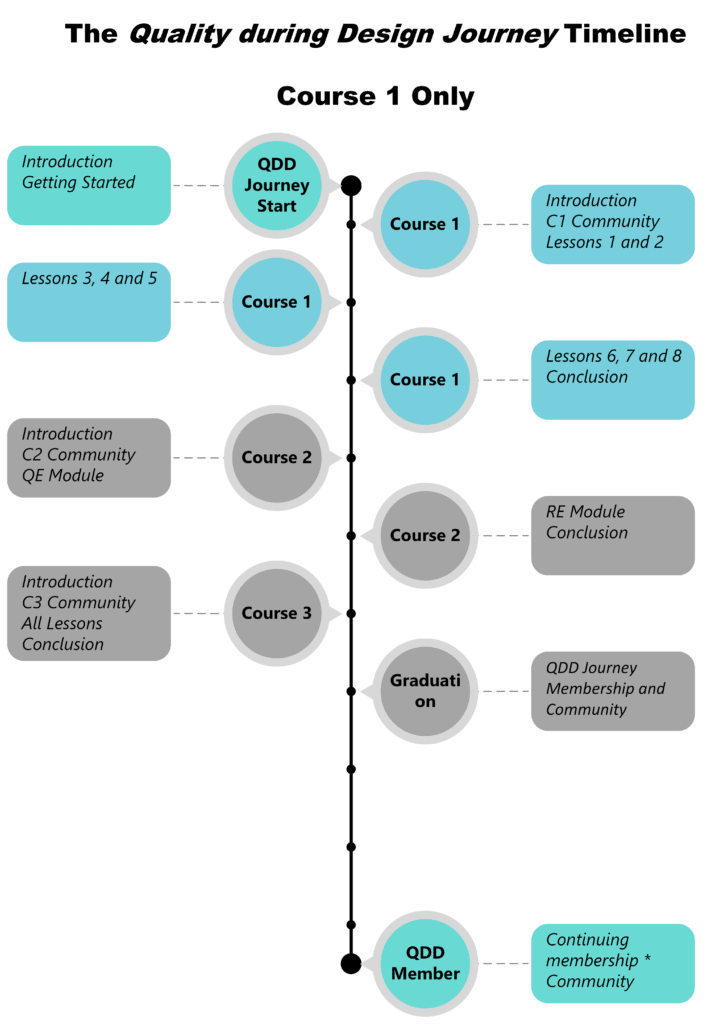
Course 1: Design for Problems and Risk
Conclusion: Design for Problems and Risk
Congratulations!
You've completed Course 1 of the Quality during Design Journey titled "Design for Problems and Risk".
We set out to learn about ways to think about and develop design concepts with your team based on problems and risk.
Let's take a look at where we've gone through our Course 1 Journey.
We first talked about how designing for excellence includes reaching out for collaboration and coming at design from multiple viewpoints. We turn some common, limiting ideas on their head, and set ourselves up for success with Quality during Design.
There were 3 main areas where we applied Quality during Design to engineering: adjust design activities to add solving problems and controlling risks, define problems and resolve root causes, and use frameworks for (you and your) teams to explore, prioritize, and iterate on the product design.
All of these lessons covered four areas: root causes, risks, concept development, and field monitoring.
And, you've performed activities to meet the learning objectives of this course:
- Evaluate problems with a team as a means of design input with the symptom-problem-cause model, tree diagrams, and why-why tools.
- Develop group discussions to explore potential risks in product concepts using the symptom break-out model.
- Identify ways design can control risks within a system with the swiss cheese model.
- Define design priorities and actions based on risk throughout the development process using risk analysis results and ratings.
- Describe how risk analyses link and why we do different types of risk analyses, knowing that we want to do FMEAs and to help us get to the root causes and controls for them and that we use fault tree analysis and hazard analysis to consider multi-point failures.
- Choose categories to monitor in the field based on risk analyses, following a model of continuous improvement, PDSA.
Download your Certificate of Completion!
Complete all the objectives!
Once you do, there will be a button that will show here so you can download your custom certificate.
[progressally_interaction interaction_id="3"]
Your Feedback is Important to Us!
[activecampaign form=65 css=1]
[progressally_progress_pie_chart post_id="11915" size="80"]
Conclusion for Course 1: Design for Problems and Risk
Objectives
[progressally_objectives layout="hide|end-of-line"]
Course Modules & Lessons
Introduction
[accessally_icon post_id="11715"]
Introduction: Quality during Design Mindset
Designing for excellence includes reaching out for collaboration and coming at design from multiple viewpoints. There are some ideas about design engineering that limit these other approaches.
We review these ideas and turn them on their head, so we're set-up for success with Quality during Design.
Module 1: Clarity from Problems
Week 1
[accessally_icon post_id="11679"]
Lesson 1: Causal Chain and Root Causes
If we can define the problem, we almost have the solution.
We introduce a symptom-problem-cause model that we'll be using throughout the rest of this course. We also talk about root causes and variations of diagrams that we can use with our cross-functional team to prompt some discussion and decision making.
[accessally_icon post_id="11717"]
Lesson 2: Symptom Break-Down to Assess Risk
There's more to symptoms that we might originally think. We talk about how to break them down into their smaller parts to help teams understand potential outcomes and impacts so we can get started with strong design inputs.
We introduce a risk analysis based on symptoms. This lets us start to assess the risk of a design concept, so we can start prioritizing features and requirements of what is yet to be designed.
Module 2: Design for Risks
Week 2
[accessally_icon post_id="11718"]
Lesson 3: Design as Controls
We re-frame design inputs and outputs as controls, considering the design of the whole system. We also classify controls as prevention and detection.
[accessally_icon post_id="11737"]
Lesson 4: FMEA in Product Development
We introduce FMEA for you to be able to be an active contributor this powerful analysis. We also start to populate it with our symptom-problem-cause model and our symptom break-out model, from the previous lessons.
[accessally_icon post_id="11720"]
Lesson 5: Risk Rating Criteria
We take FMEA a step further with rating and prioritization. We focus on using the ratings in the FMEA to rank risks and propose controls and actions to address risk. We can help guide others in deciding about a risk rating.
Module 3: Iterating on the Design
Week 3
[accessally_icon post_id="11721"]
Lesson 6: Building Risk Analyses for Design Decisions
We explore all the types of FMEAs plus Hazards Analysis, how we decide which ones to do depending on what we want to learn and analyze. This lesson brings together all the previous lesson into FMEA mastery!
[accessally_icon post_id="11722"]
Lesson 7: Iterating through the Development Process
We talk about the product development process, that FMEAs and other risk analyses are "living documents", and how to iterate on the design and the risk analyses to build upon our knowledge base to design with success.
[accessally_icon post_id="11723"]
Lesson 8: Monitoring after Launch
We have a responsibility to monitor our product after launch, to both look for opportunities and to check that our product is being used in the use environment that we intended at the start of our design.





